| I'm not sure where Utah is managed from at the moment because the
Capitol building is being extensively refurbished, particularly to improve
its earthquake resistance. Salt Lake City is in an earthquake zone but they
have had no trouble in living memory. This building is up the hill from the
Temple and in quite a commanding position over the otherwise totally flat
city plain. | 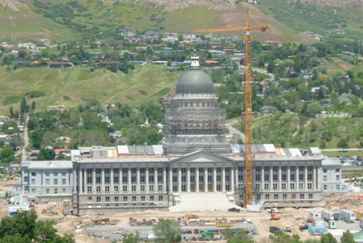 |
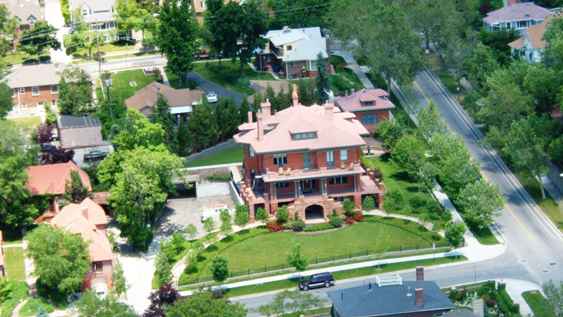 |
Many of the buildings are of a fairly standard construction but there are
one or two large family style residences scattered about such as this one.
It is fairly close to Temple Square so is likely to have been linked to one
of the top men amongst the earliest pioneers. What is also noticeable is the
number of trees in the city as a whole. Given that there was only one tree
in the whole valley when the pioneers arrived, the transformation is
significant. |
| The importance of the railways in the development of the West.
The trains kept us awake most nights because they sound their horns at every
road crossing ie virtually every block, and they only travel at about 10mph.
So here is a view of the main Union Pacific railway yard with the Salt Lake
itself in the distance. You can also see the mountains in the haze. The haze
is quite significant and the result of atmospheric 'inversion' effects. | 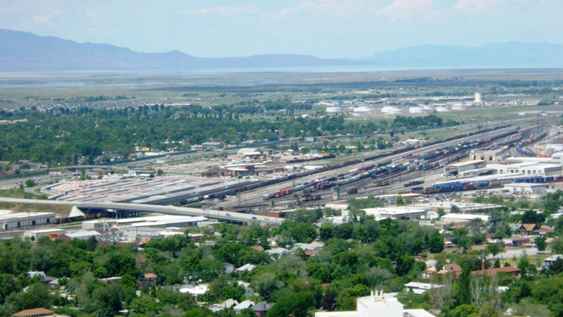 |
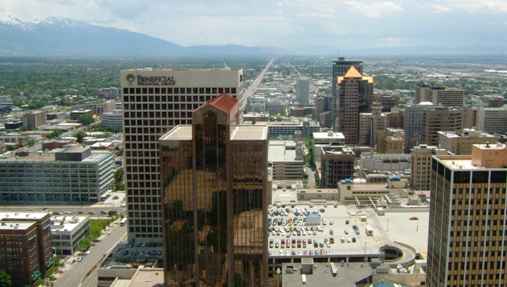 |
This view is to the south of the office building and not normally seen by
visitors. The copper colour on the buildings is to reduce solar gain. You
can also see just how straight the city roads are, as originally laid out by
Brigham Young. It also shows just how flat the valley bottom is and how the
LDS Office with its 26 floors dominates the city even if the Temple does
not. |
| We had a side trip some 20 miles southwest from the city to the
Kennecott Utah Copper Mine. This is the largest man made hole in the world
and is one of the two man-made features visible from space. The other is the
Great Wall of China. It is 0.75 mile deep and 2.5 miles wide. The ore is
very low grade but by extracting and processing ore on a vast scale it is
the cheapest source of copper (and several other metals) in the world. The
tiny trucks you can just see carry 250-300 tons of ore and the driver sits
18ft above the ground. The ore is crushed in the mine and then carried by a
five mile conveyor through the mountain to the concentration plant. | 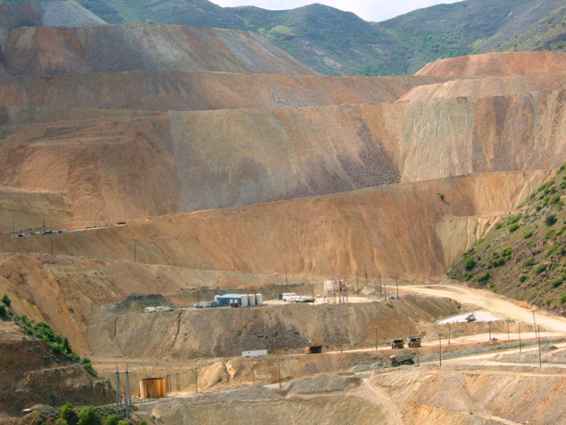 |
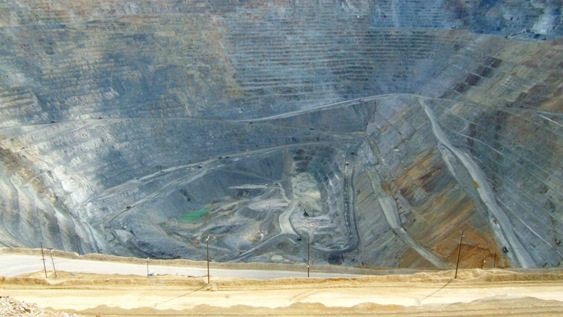 |
This is the view from the visitor centre down into the hole. Now the trucks
are just too small to see. The tiny black dot in the centre is a shovel
which loads the trucks with 100 tons of ore at a time. They have eight and
they cost over $8 million each. Each ton of ore produces only 12lb of
copper. |
| At the visitor centre they have a film and a host of other
displays including this model of the ore concentration plant. Here the ore
is crushed again reducing it from football size to face powder and then
floating out the copper on bubbles of water. It increases the copper
concentration from 1% to 25%. This concentrate is then dried and smelted to
get 98% purity. It is then further refined catalytically to 99.9% purity.
The smelting process removes the sulphur and as a byproduct produces a
million tons of commercial grade sulphuric acid per year. The scale of the
operation has to be seen to be believed. | 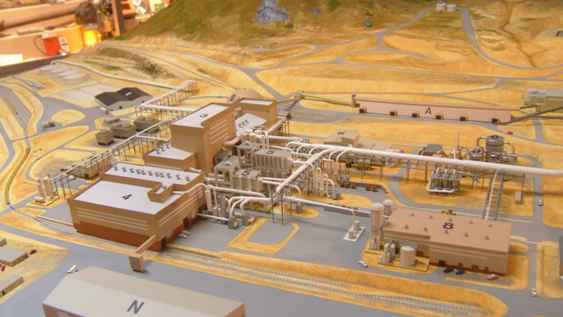 |
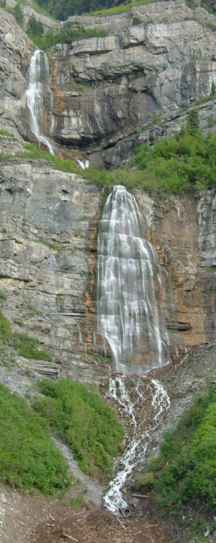 |
Other side trips in the area took us to Bridal Veil falls in Provo canyon.
We had returned to Provo to visit friends again. We had hoped to take a trip
round the 50 mile scenic drive but we could not find a base within scooter
range. Then the weather took a hand and flooded part of the road which has
many switchbacks and would not be driveable in the RV. |
|